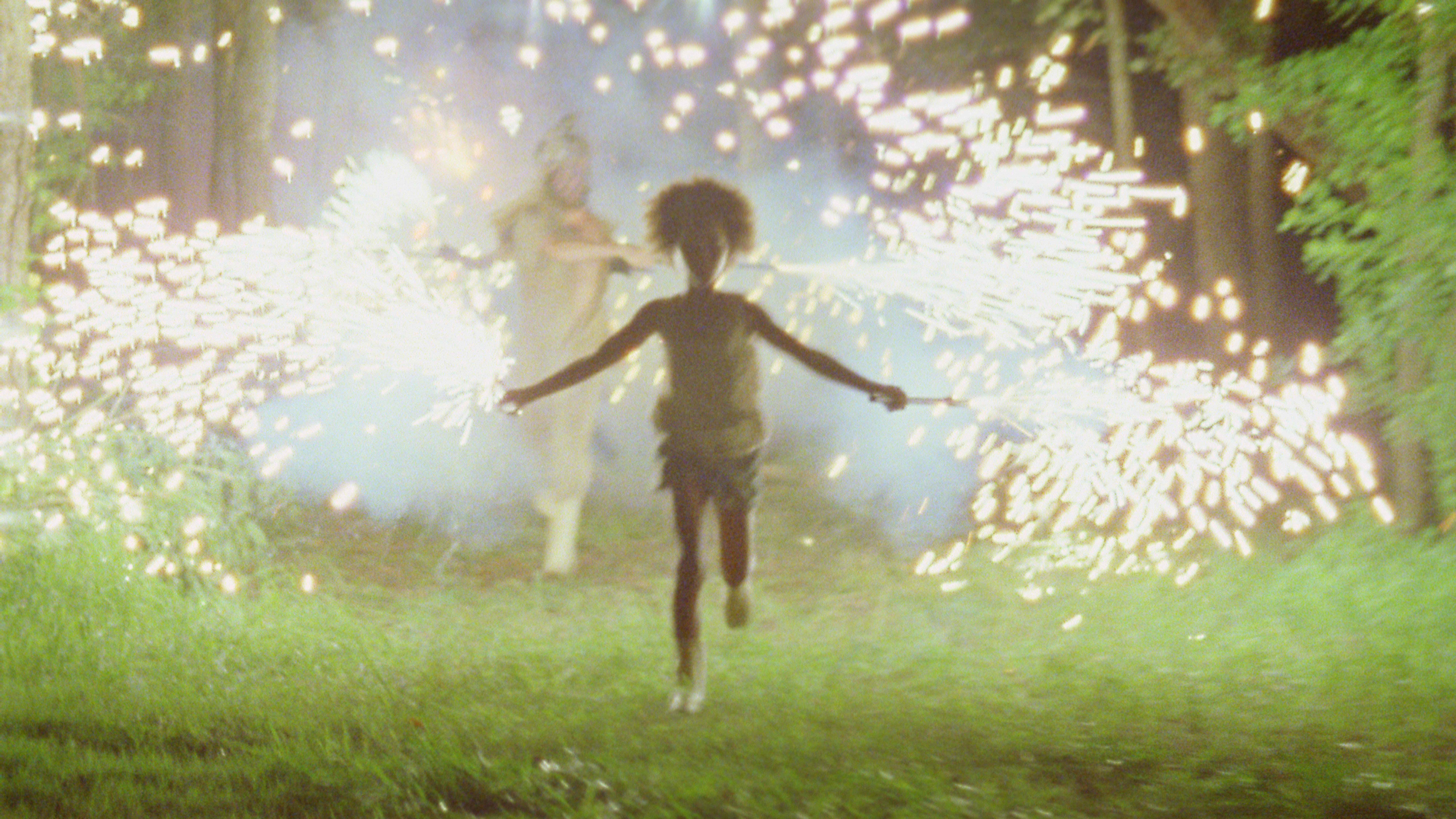Benh Zeitlan’s directorial debut “Beasts of the Southern
Wild” is the most unique and profound movie I’ve seen so far this year. It’s a
movie that can’t be summed up in a few sentences; it can’t be put into any one
genre because it has elements from many. On the one hand it tells a completely
genuine story about family, community and growing up. And on the other hand it
has an otherworldly quality about it. It contains elements of fantasy and
mystery and above all adventure. On top of that it feels—due to its underlying
environmental themes—strangely relevant. And Zeitlan handles every aspect of it
with immense care.
The very first thing you notice in “Beasts of the Southern
Wild” is the peculiarity of its setting. It takes place in an isolated Bayou,
known as “The Bath Tub.” The houses around it are rundown, the yards and other
open areas are filled with old junk. There’s no electricity and you have to
find and kill your own food.
The first person we meet is a six-year-old girl named
Hushpuppy (Quenzhane Wallis), the little but irrepressible protagonist of the
movie. Hushpuppy is one of the toughest kids you’ll ever meet in any film. She
lives with her dad Wink (Dwight Henry) who does care and provide for her but
she still has to tend to daily responsibilities like finding food and supplies;
she even lives in her own little house a couple of yards away from Wink. They
have kind of a love-hate bond. Wink is at times compassionate (teaching her
necessary skills, like how to gut a chicken) and at others strict and intense.
He’s always telling her to toughen up and not to cry. But
he’s only going by what he knows and how he was most likely raised, like Brad
Pitt’s authoritarian father character in Terrence Malik’s “The Tree of Life.”
He knows that the world is a harsh place and he wants Hushpuppy to learn that
early on so if something bad happens she knows how to deal with it. Their
relationship is the central one in the entire movie and it’s where most of the
emotion comes from.
Hushpuppy, Wink and all the other inhabitants of “The
Bathtub” live in a primitive society but it’s a primitive society that’s built
from the remnants of modern society. (Wink has a boat that’s made out of the
bed of a pickup truck.) It’s almost like “The Bathtub” is a post apocalyptic
civilization. An early theme that shows up in the movie is a sense of
community. Hushpuppy and the others don’t live in the lap of luxury but they’re
still happy. (In their minds they probably do live in luxury.) They have
nightly celebrations with fireworks, music and drinking. The place may be a
dump but it’s their home and they make the most of it. We do learn soon enough
that there is a modern society in this strange land—a massive cement wall separates
the two worlds-- but the residents of “The Bathtub” despise it because they
pollute and waste resources.
As I said before there are underlying environmental themes
scattered throughout “Beasts” and obvious ones at that. One of the main
conflicts in the story is that, due to global warming, the ice caps melt, which
causes flooding in “The Bathtub,” making Hushpuppy and everyone else
temporarily homeless. Besides the clear reference to global warming and the ice
caps, the flooding of “The Bathtub” is can be seen as an allusion to Hurricane
Katrina and its tremendous impact on the people of New Orleans. Luckily Zeitlan
doesn’t directly reference any real events, nor does he preach. There may be an
allusion to Hurricane Katrina but he doesn’t say it, he doesn’t even say it’s
Louisiana (but based on the people, how they talk, what they eat you can easily
assume that it is Louisiana).
“Beasts” is very much a character driven story. To be more
precise it’s Hushpuppy’s story. It’s about her journey and growth. To make matters
even worse for Hushpuppy her father suffers from serious health issues and that
causes her to have to go out and search for her mother (who abandoned them long
ago) and brave the real world, no matter how mysterious or terrifying it may
be. This is where the fantasy/adventure aspects of the story come in.
Besides the flooding, the ice caps also unleash an army of
giant prehistoric beasts known as Aurochs (sort of like bigger, meaner looking
hogs) that threaten to destroy her home as well. You may have your own thoughts
on the existence of the “beasts” but to me they come off as symbolic
representations of her greatest fears and challenges. The movie is told from a
child’s perspective after all and to a child the world is a much bigger,
scarier and exaggerated place. Hushpuppy’s actual obstacles are quite real.
Everything in “Beasts of the Southern Wild” feels one
hundred percent authentic. The cinematography by Ben Richardson has the worn,
hand held, cinema verite look you see in most independent movies these days,
giving it a homegrown vibe. The acting is all done by non-professionals.
Everyone is so natural that they don’t come off like they’re giving a
performance. Nothing seems staged. It feels like Zeitlan grabbed a camera and
went to an actual slum and just filmed the day-to-day activities.
In the end “Beasts” is a movie that you have to discover for
yourself. Everyone can relate to some piece of it and even if you don’t like
it, it’s still one of the most surreal and honest movies you’ll likely
encounter this entire year. It’s simply visual poetry.

No comments:
Post a Comment